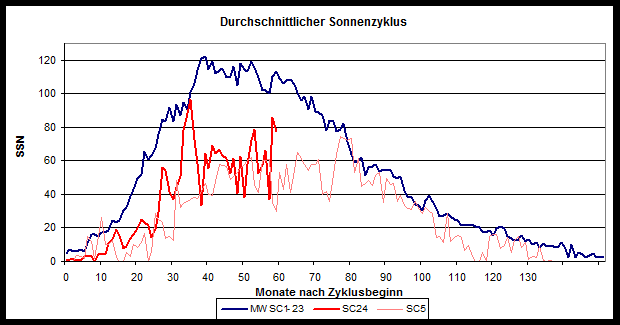
Since solar cycle 24 began in December 2008, we have been witnessing a much weaker than normal solar cycle. Temporary spikes like those of last month reaching mean value have been the exception rather than the norm. Thus we continue to be on a similar track as SC 5, which was the first of the Dalton Minimum just after 1800. If one accumulates the sunspot number anomalies of each cycle up to the current month 60, we get the following graphic:
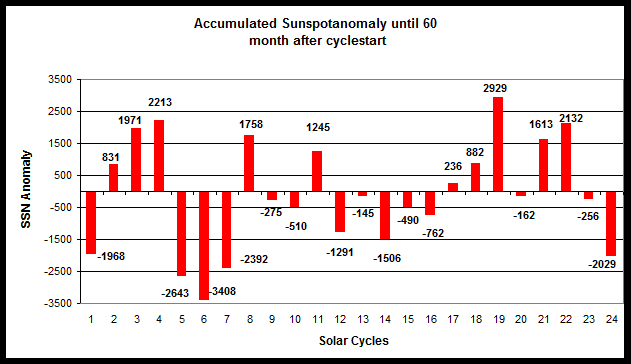
What lies ahead?
We have already cited forecasts based on physical attributes where the behavior of the corona (a very warm zone above the visible surface of the sun) and the magnetic field strength about the sun spots suggest continued weakening activity for the next solar cycle (Livingston/Penn). We now cite a study by Salvador (2013) that attempts to reconstruct solar cycles using planetary tidal effects on the sun. Even though we view this approach with skepticism, an amazing level of congruence with observed data is achieved:
The red curve depicts the model and the blue curve shows the observed sunspot data since 1749. On this basis the author then makes a forecast where he takes the data starting in 1987 and calibrates his models using amplitudes and extends it into the future:
Also in his model, SC 25 and 26 are projected to be very weak and in fact he forecasts a weak sun to persist until the end of the century. It is not our intention to forecast so far into the future, but little is expected to happen with our sun in the next 30 years the author of the article believes in addition to other authors. What impact will this have on the Earth? Shouldn't the drop in solar activity have and impact? What follows is a chart of the global wintertime temperature distribution comparing the values of the last 10 years to the 12 years that preceded them:
The land-based temperatures in the winter between 30N and 60N have fallen. Especially the Eurasian region has been experiencing much colder winters since 2002. The datasets yield the following interesting results:
Depicted by the red curve is the annual SSN anomaly since 2002 as to the first figure. Can the drop since 2003 indeed at least be partially because of the reduced solar activity?
There is plenty of literature available on this, and a possible relation is explained by Sarah Ineson (2012) in a presentation by the British Met Office. The reduced UV radiation of the sun at low activity has an impact on the stratosphere and this has an effect especially on the winter circulation down to the Earth's surface.
What does this tell us?
The trend to colder winters here in Europe and elsewhere, all the way to China in the Far East and the east coast of the USA, has truly been robust over the last 10 years. From this we conclude that we hardly can anticipate warmer winters for the near future and that it may remain that way for a very long time should the solar relationship be confirmed. Therefore add more anti-freeze in the windscreen wiper reservoir of your car! Winter has arrived and likely it isn't going to be a mild one!
(Translated, edited by P Gosselin)
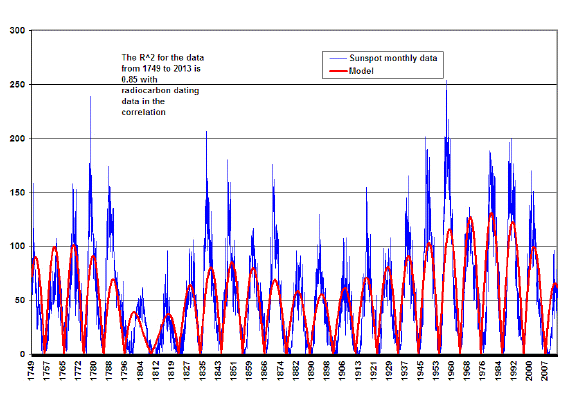
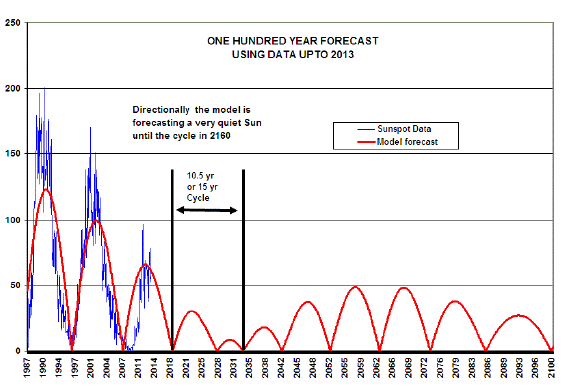
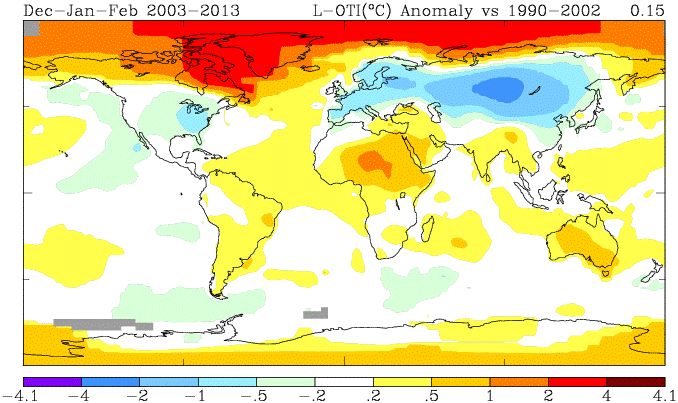
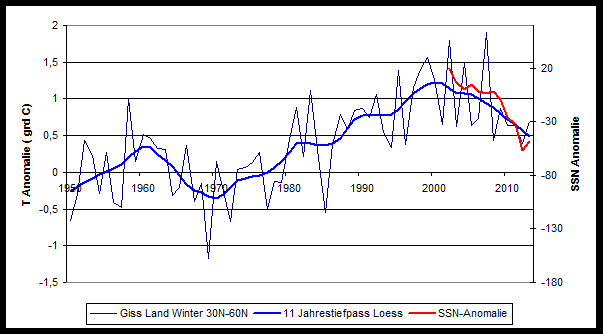



Reader Comments
to our Newsletter